From the May 2021 issue of Apollo. Preview and subscribe here.
It’s like Game of Thrones, but with art instead of sex. I’ve found myself repeating that summary frequently while evangelising about Story of Yanxi Palace (2018), a Chinese period drama loosely based on historic figures in the Qing dynasty court of the Qianlong Emperor (1711–99) – and one of my lockdown obsessions. The tale begins in 1741, when our Cinderella-like heroine Wei Yingluo (Wu Jinyan) enters the Forbidden City, ostensibly to work as an embroidery maid at the palaces, but with a secret mission: to uncover the perpetrator behind her beloved sister’s rape and murder. It’s a suitably knotty start to a narrative as labyrinthine as it is long; the series comprises 70 episodes at 45 minutes apiece.
Besides the intricacies of its intrigues, what has kept me enthralled is the sheer spectacle of the thing. From its heavily embroidered robes and carved jade to lavish lacquerwork and pottery, Story of Yanxi Palace is a feast for the eyes. In 2018, the show was streamed more than 15 billion times on the Chinese video platform iQiyi, before falling foul of government censors and being pulled from TV screens. The charge? Its ‘negative influence on society’, promoting admiration for imperial China and its luxurious lifestyles, an argument initially set out in Theory Weekly (a magazine affiliated with the Chinese Communist Party’s newspaper, the Beijing Daily).
What sets Story of Yanxi Palace apart from similar historical dramas – and China boasts a rich roster of such shows – is its devotion to the decorative arts. This makes historical sense: the Qianlong Emperor was an insatiable collector, preoccupied with expanding the imperial holdings by any means (besides keeping a keen eye on sales of artworks and antiques, he was not above coercing his subjects to make him ‘gifts’ of their possessions). The interiors, their design inspired by historical documents and descriptions of the Forbidden City, are thick with objects specially crafted by artisans to replicate items in the imperial collections. ‘No TV show before us has put together so many intangible cultural heritage artifacts,’ producer Yu Zheng has claimed.
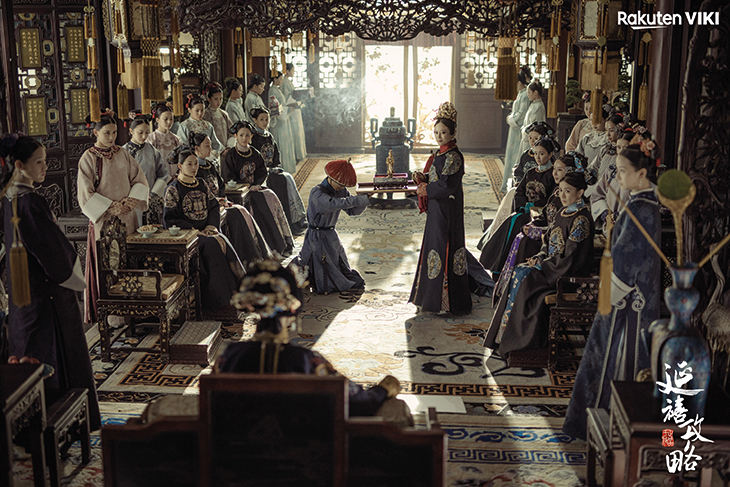
A palace interior in the Forbidden City, as reimagined in Story of Yanxi Palace. Image courtesy Rakuten Viki
There are glimpses of Song dynasty-style ceramics – not least Ru ware, the refined duck-egg blue stoneware produced for the imperial court for just a brief period around 1100. The Qianlong Emperor owned half of all known examples. In a paean to these pieces, he described a Ru bowl – now in the Sir Percival David Collection at the British Museum – as being ‘as rare as stars in the morning’. On screen, the irascible emperor vents his spleen by smashing quantities of famille rose teacups decorated with the canary-yellow ground reserved for royalty, while favoured consorts receive gifts of zithers or scrolls. Such items are not merely background dressing: plot points frequently turn upon them. A row between Yingluo and the emperor hinges on a prized possession, the austerely beautiful handscroll Autumn Colours on the Qiao and Hua Mountains (1295), painted and inscribed by Zhao Mengfu and today in the collection of the National Palace Museum in Taipei.
It is the show’s attention to costume and fashion, however, that has most captivated its viewers. Empresses, consorts, concubines and attendants alike pin ronghua in their hair: ornaments of silk velvet twisted around copper wire forms, quite literally crowning glories (ronghua is a homophone for ‘glory’). The ronghua in Story of Yanxi Palace were created by the craftsman Zhao Shuxian, who has been making velvet flowers for four decades. He was commissioned to reproduce examples held by the Palace Museum in Beijing, including an elaborate money-tree-inspired design seen on the empress, Fuca Rongyin, in the programme; the complexity of such designs reflected the status of their wearers. Zhao is one of only a handful of artisans still practising this ancient craft, which dates back to the Tang Dynasty (618–907) and features on the Intangible Cultural Heritage List for Jiangsu Province. But the popularity of Story of Yanxi Palace has offered a lifeline, it seems: Zhao now reports a lengthy waiting list for his blossom-like headpieces.
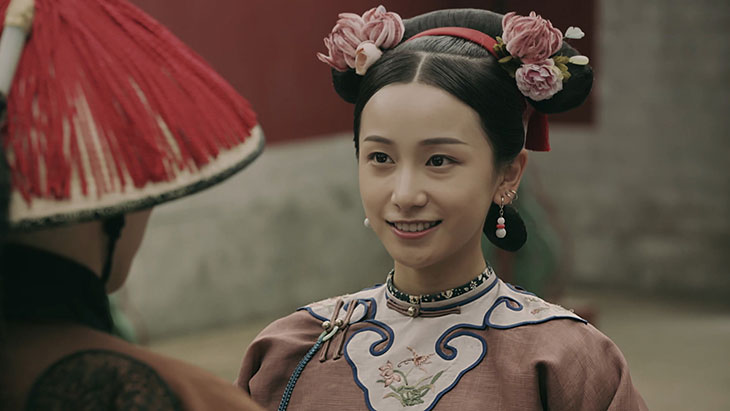
Still from Story of Yanxi Palace (2018), showing the wearing of silk velvet flowers (ronghua). Courtesy iQiyi
Other striking items include tian-tsui-style hairpins and headdresses. These props imitate historical objects inlaid with iridescent kingfisher feathers of a blue so vivid that even cloisonné cannot match its hue (it is believed that the Beijing enamel technique was developed in an attempt to imitate it). The most elaborate accessory is worn by the social climber Hitara Erqing during her marriage to the empress’s brother, Fuca Fuheng: an intricate confection of tassels and tian-tsui known as a fengguan or ‘phoenix crown’. Two characters who successively become empress wear a replica of a red velvet fengguan in the Palace Museum in Beijing, with a finial of three pearl-studded gold phoenixes, delicately perched one above the next.
Early in the series, one storyline involves the theft of valuable peacock thread destined to decorate an outfit for the first empress’s birthday. More expensive than gold yarn, peacock thread was made by wrapping strands of feathers around silk or by entwining feathery filaments. Few examples of embroidery made using this delicate yarn – thought to have originated in fifth-century China – survive to the present day. In fact, numerous historical textile techniques were employed to produce the show’s luxurious Manchurian-style costumes; one ceremonial robe worn by the emperor is so ornate that its creation reportedly required 18 styles of embroidery. (Story of Yanxi Palace-inspired designs began to appear on Chinese catwalks not long after the series was broadcast.)
It’s not all painstaking verisimilitude, however. The hairstyles are often anachronistic, the CGI animals are risible, and the boulders look as though they might budge with a nudge. Yet for all its inconsistencies, nothing has transported me in recent months quite like Story of Yanxi Palace. While museum visits and international travel remain off limits, it’s hard to think of a more enjoyable way to encounter objects.
From the May 2021 issue of Apollo. Preview and subscribe here.
Unlimited access from just $16 every 3 months
Subscribe to get unlimited and exclusive access to the top art stories, interviews and exhibition reviews.

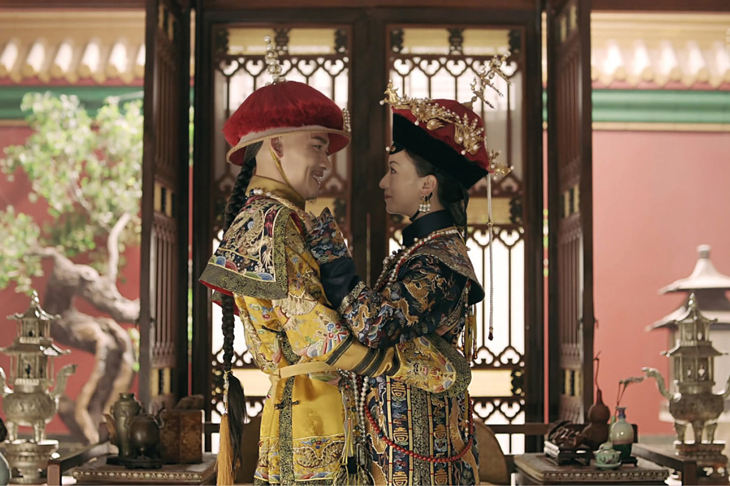
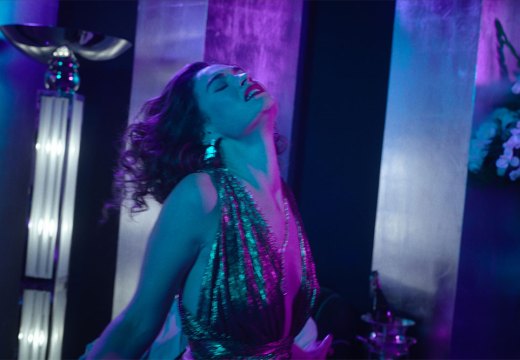

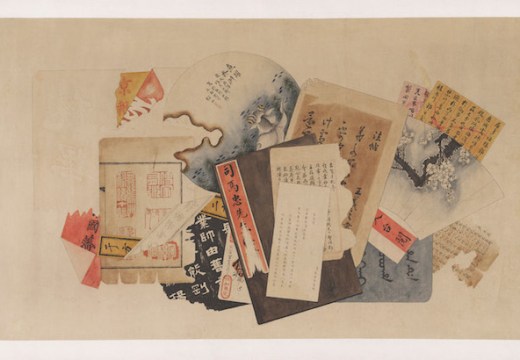









![Masterpiece [Re]discovery 2022. Photo: Ben Fisher Photography, courtesy of Masterpiece London](http://www.apollo-magazine.com/wp-content/uploads/2022/07/MPL2022_4263.jpg)
It’s time for the government of London to return to its rightful home